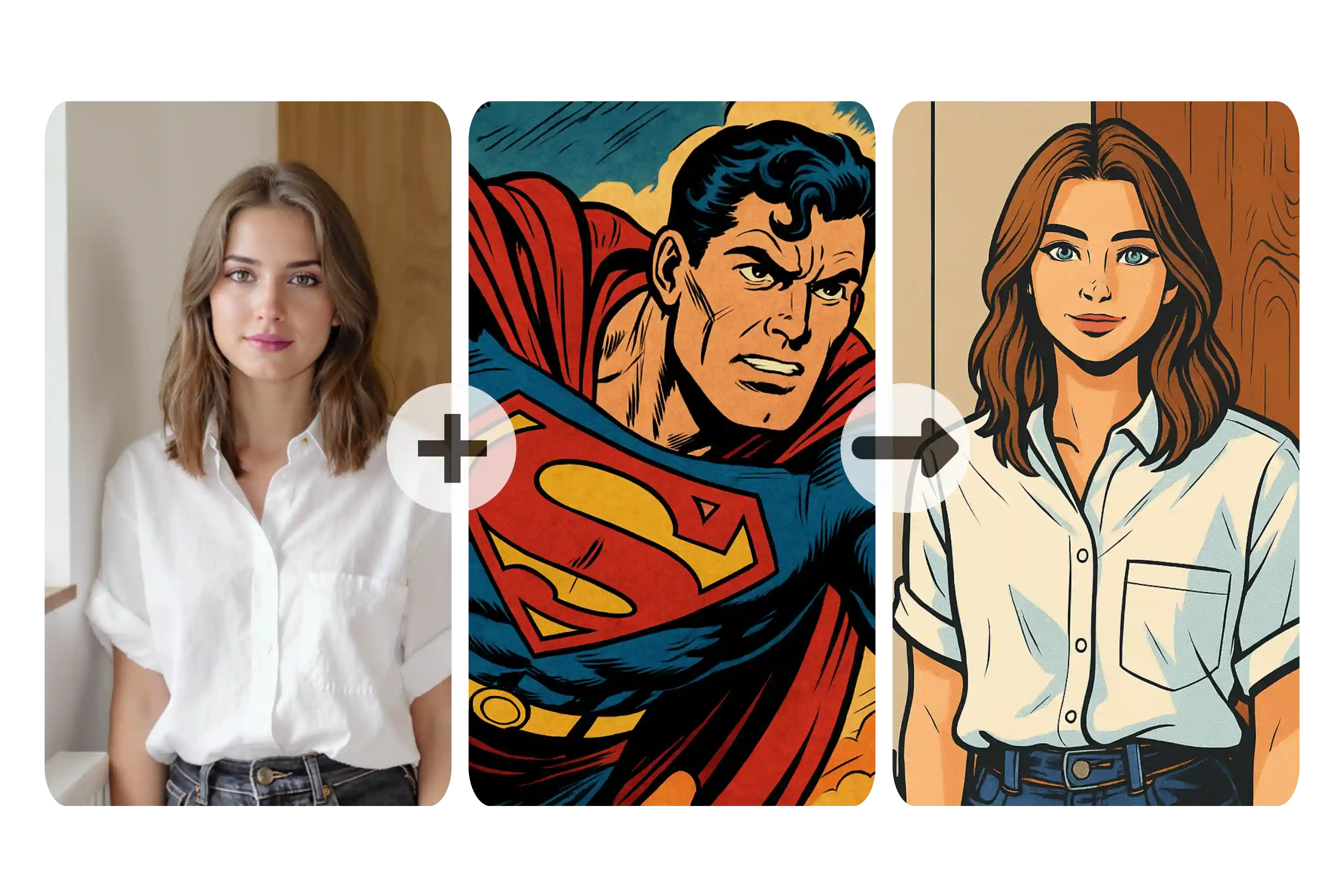Basic Concepts
Before we dive into the technical stuff, let me explain what AI image merging actually is and why it's so fascinating. When I first started, I had no idea what I was getting into - it felt like magic, but understanding the basics made everything click.
This guide will break down the core concepts in simple terms, sharing what I wish someone had explained to me when I was just starting out.
What is AI Image Merging?
Think of it like having a really smart artist who can take two completely different pictures and blend them into something new and unique. It's not just copying and pasting - the AI actually understands what it's looking at and creates something that makes sense.
I remember my first reaction was "How does it know what to keep and what to change?" The answer is that it's been trained on millions of images, so it has a pretty good sense of what looks natural and what doesn't.
Key Point
It's not magic - it's pattern recognition on steroids. The AI looks for patterns in your images and your description, then creates something that follows those patterns.

How Does It Actually Work?
Understanding Your Images
The AI analyzes both images to understand what's in them - objects, colors, styles, lighting. It's like having someone really look at your photos instead of just seeing pixels.
Processing Your Description
Your text description gets broken down into concepts the AI understands. "Watercolor style" triggers different patterns than "cyberpunk" - it's like giving the AI a creative brief.
Creating Something New
The AI combines everything it learned and generates a brand new image. It's not just mixing your photos - it's creating something that never existed before.
Key Terms You'll Encounter
Prompt
This is your description of what you want. I used to think "the more words the better," but actually, being specific and clear works much better than being verbose.
Example: "Merge the cat into the forest scene with a dreamy, soft lighting effect"
Style Transfer
When you want one image to look like it was painted in the style of another. I love this feature - it's like having an artist who can paint in any style you want.
Example: Making a photo look like a Van Gogh painting
Composition
How elements are arranged in your image. The AI is pretty good at understanding composition, but it helps to be clear about what you want where.
Example: "Put the mountain in the background, the person in the foreground"
Resolution
The size of your image in pixels. Higher resolution means more detail, but also longer processing time. I usually stick to 1024x1024 for good balance.
Example: 1024x1024 pixels = 1 megapixel
Common Misconceptions (I Had These Too!)
Let me clear up some things I got wrong when I first started:
"The AI will read my mind"
Nope! You need to be specific about what you want. The AI is smart, but it's not psychic.
"Any two images will work"
Some combinations work better than others. I learned this through lots of trial and error.
"It's just copying and pasting"
The AI actually creates new pixels and patterns. It's more like having an artist paint something new.
What Makes a Good Merge?
Compatible Images
- Similar lighting conditions (both bright or both dark)
- Complementary color schemes
- Similar styles or themes
- Clear, high-quality source images
Personal tip: I've found that images with similar "moods" work best together.
Clear Descriptions
- Specific about what you want to achieve
- Mention style preferences clearly
- Describe the composition you want
- Include mood or atmosphere details
I learned that "dreamy sunset vibes" works better than "make it pretty."
The Learning Curve (Be Patient!)
Here's what to expect as you learn:
First Attempts
Results might be weird or unexpected. That's totally normal - I still get surprises sometimes!
Getting the Hang of It
You'll start to understand what works and what doesn't. This is when it gets really fun!
Mastery
You'll develop your own style and techniques. This is where the real creativity happens.
Remember: Every "failed" attempt teaches you something valuable. I've learned more from my weird results than my perfect ones!
Ready to Start Creating?
Now that you understand the basics, it's time to get hands-on. I've organized these next tutorials based on what I wish I'd learned when I was just starting out.